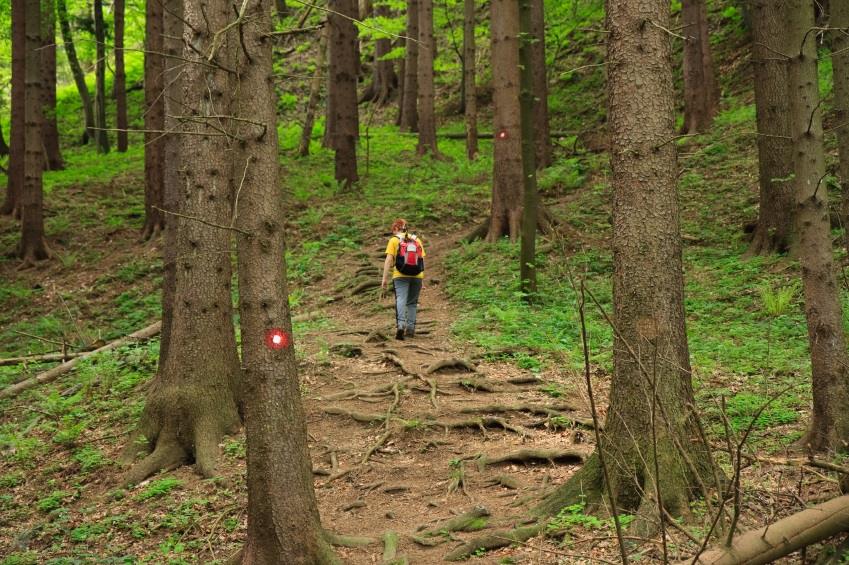 A walk in the park suddenly turns to tragedy when an escaped dog mauls one of your children. A nature hike is cut short when a deranged homeless man is seen skulking in the bushes. A camping trip turns into a nightmare when you get lost going to the bathroom, only to face an unusually brave coyote who snarls at you. All of these scenarios depict the need for an easily accessible weapon, which you may or may not have thought of beforehand. Thankfully, the wilderness is teeming with improvised weapons just waiting to be used.
A walk in the park suddenly turns to tragedy when an escaped dog mauls one of your children. A nature hike is cut short when a deranged homeless man is seen skulking in the bushes. A camping trip turns into a nightmare when you get lost going to the bathroom, only to face an unusually brave coyote who snarls at you. All of these scenarios depict the need for an easily accessible weapon, which you may or may not have thought of beforehand. Thankfully, the wilderness is teeming with improvised weapons just waiting to be used.
First of all, no improvised weapon is going to be better than the weapon you pack and regularly train with! If you have the ability to carry a handgun, combat knife or other weapon, you should do so. Still, many national and state parks prohibit weapons since they assume that all firearms will be used for illegal hunting rather than for legitimate defensive purposes. Even if the weapons are legal, some park rangers and other park staff may inhibit your trip with undue scrutiny. The point is, you may not always be allowed to be armed whenever you feel like it, and therefore, you need to be aware of the potential for improvised weapons sourced exclusively from the outdoors.
THE CLUB
Clubs and their derivatives have been around since the first branch fell off the first tree and was picked up by the first man, who thought it would make a handy weapon.
Ultimate Tactical Self-Defense And Hunting Weapon That Doesn’t Require A Firearms License!
A club, stick, branch or whatever you want to call it makes a formidable defensive weapon, even in untrained hands. There are some guidelines you should follow, however:
- If possible, inspect fallen branches that you plan to use as a defensive weapon before you use them. If they are lying on the ground, that means they’re dead, and if they’re dead, that means they might be riddled with termites or rotting, which makes them useless as a defensive weapon.
- If you have time before a suspected encounter, select a piece of wood from a living tree to use as a walking stick or club. As a rule, the limb should be no thicker than an inch or so around, and should be as straight as possible, three to five feet long. Green wood like this is flexible and resilient when striking objects, and if you keep the diameter of the stick to 1 inch or less, you’ll be able to break it off the tree with body weight alone.
- Occasionally, hardwood branches fall to the ground due to storms or other natural phenomena and then dry out over time, seasoning perfectly. Although rare, a dried piece of seasoned wood will harden while not becoming too brittle. From limbs such as these, you can make a spear by sharpening the point of the wood, then placing the pointed end in a bed of hot coals for half an hour or so. The wood will not burn, and will actually harden, giving the stick some extra punch.
THE ROCK
Perhaps the most basic of weapons, a simple rock imparts lots of striking energy into your target by virtue of its mass alone. Consider that a rock weighing as little as a pound can easily crack a skull or a rib when swung by the average adult – something most people cannot do with fists or feet alone. If you have the opportunity to select a rock before an encounter, pick the smoothest rock possible. This is so that you won’t injure your hand with sharp edges. If there are sharp edges on the rock, make sure those make contact with the attacker by pointing them outwards, keeping the smoother parts closest to your palm. Avoid flinty rocks or rocks that have cracks in them.
THE WAR CLUB
A great combination of rock and stick is the basic Native American war club, which is nothing more than a three-fourths inch to 1 inch diameter stick that’s about two feet long. The stick should be solid wood, free from rot, and can even be green. Split one end of the stick in half, with a slice around 8 inches long. Spread this slice open into two halves, and insert a decent size rock of about a pound within, then lash the whole assembly with paracord or even a shoelace. What you get is an extremely formidable weapon that is easily capable of shattering skulls – and best of all – the materials to make this club are found in just about every park, forest, campground, and wilderness in the country!
Improvising weapons doesn’t need to be hard. In fact, potential weapons are just about everywhere you look in the great outdoors. Next time you find yourself in some trouble, reach for that stick or rock, much as mankind has done for millennia, and even the odds a little.
Sign up for Off The Grid News’ weekly email and stay informed about the issues important to you












